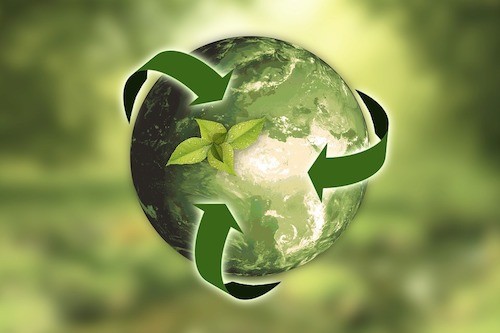 Green Public Procurement or GPP
Green Public Procurement or GPP (Green Public Procurement) have been defined by the European Commission as an approach based on which Public Administrations integrate environmental criteria at all stages of the purchasing process, encouraging the diffusion of environmental technologies and product development valid from an environmental point of view, through research and the choice of results and solutions that have the least possible impact on the environment throughout the entire life cycle. Public procurement alone accounts for 20% of EU GDP.
In Italy, with the introduction of
Minimum Environmental Criteria in the public procurement code, many of the efforts made so far to improve environmental performance can now find gratification in a law, the first in the whole of the EU, which is an example of application of the model of circular economy.
Italy, the first nation in this scenario, approved the "Action Plan for the environmental sustainability of public administration consumption" ten years ago and today, thanks to the code of public contracts, Legislative Decree 50/2016 and 56/2017,
is the only European state to have made mandatory the CAM Environmental Minimum Criteria. Unfortunately, however, it is not always true that an obbligation matches with adequates tools and procedures. Compared to the obligatory introduction of CAM, there are indeed some difficulties that affect all those involved.
The contracting stations, which must be enabled to understand and verify the certificates produced during the tender and the companies that, without any "entry threshold", must deal with technically complex regulations and produce adequate documentation.Then there is a difficulty in certifying the requisites required: for some products, as in the case of copy and graphic paper, the conformity of the Ecolabel label is recognized , while for others, as in the case of woodden furniture regulated by the decree ministerial 11.01.2017 , this does not happen.
In the furniture wood sector, in fact, attention to the wholesomeness of every component used, to the use of material coming from the recovery of waste, goes hand in hand with attention to the overall performance of the finished product. From our observatory we note the success with which certifications, such as CARB EPA as well as other voluntary certifications, cease to be horizontal information between producers of parts / semi-finished products and become a fundamental part of the finished furniture and a transversal heritage of companies.
Despite the publication of the FAQ section on the website of the Ministry of the Environment and the Territory, the application of CAM to the furniture requires a lot of attention and familiarity with the standard.


 Green Public Procurement or GPP (Green Public Procurement) have been defined by the European Commission as an approach based on which Public Administrations integrate environmental criteria at all stages of the purchasing process, encouraging the diffusion of environmental technologies and product development valid from an environmental point of view, through research and the choice of results and solutions that have the least possible impact on the environment throughout the entire life cycle. Public procurement alone accounts for 20% of EU GDP.
Green Public Procurement or GPP (Green Public Procurement) have been defined by the European Commission as an approach based on which Public Administrations integrate environmental criteria at all stages of the purchasing process, encouraging the diffusion of environmental technologies and product development valid from an environmental point of view, through research and the choice of results and solutions that have the least possible impact on the environment throughout the entire life cycle. Public procurement alone accounts for 20% of EU GDP.